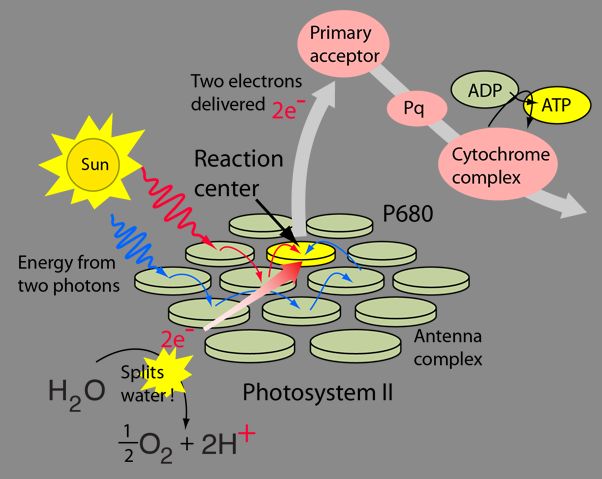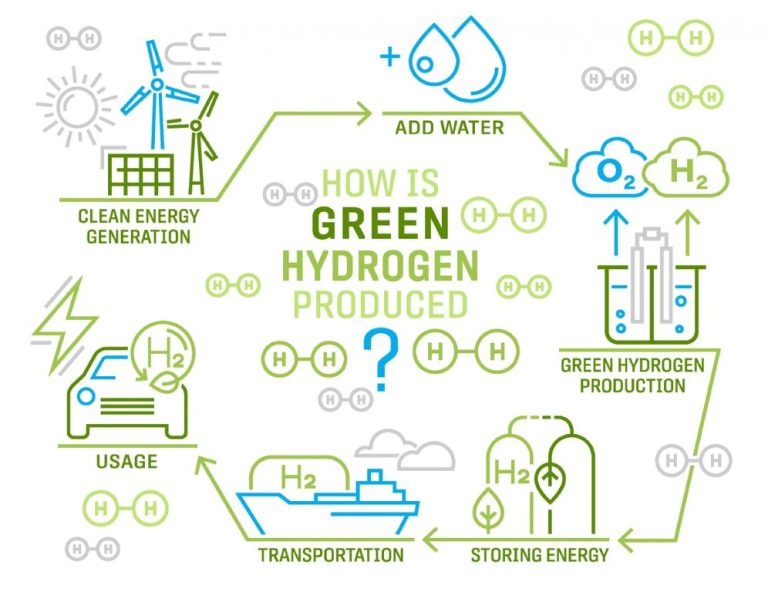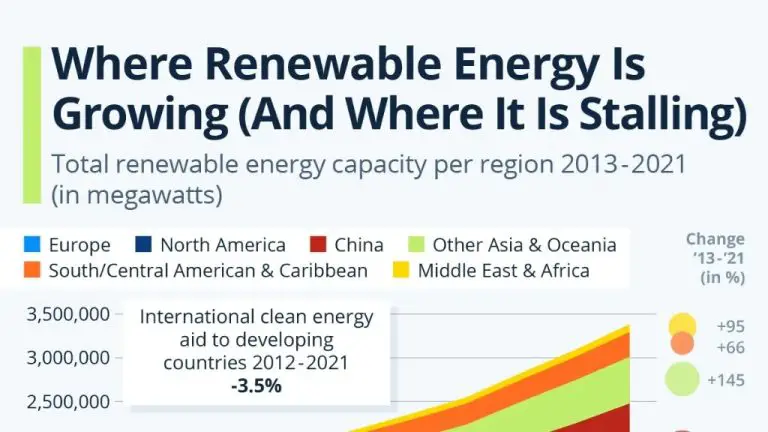What Happens During Photosynthesis Energy?
Photosynthesis is the process by which plants, algae, and certain bacteria convert solar energy into chemical energy. It allows them to capture sunlight and use it to drive the synthesis of organic compounds from carbon dioxide (CO2) and water (H2O). Photosynthesis is essential for nearly all life on Earth, providing the food, oxygen, and energy that sustain plant and animal species alike.
During photosynthesis, plants absorb light energy using chlorophyll in their leaves. This energy is converted into chemical bonds that store energy in glucose molecules. Oxygen is released as a byproduct. The overall chemical equation for photosynthesis is 6CO2 + 6H2O + Light Energy → C6H12O6 + 6O2. This process allows plants to utilize the sun’s energy to power growth, reproduction, and other functions.
In summary, photosynthesis harnesses solar power to produce carbohydrates for food. It also generates oxygen, which aerobic organisms require for respiration. Photosynthesis is therefore fundamental to most ecosystems and life on Earth. It provides the basic energy source for nearly all food chains.
Inputs of Photosynthesis
Photosynthesis requires three main inputs in order to occur: sunlight, water, and carbon dioxide. These ingredients are vital for allowing plants to produce glucose and oxygen.
Sunlight provides the energy that powers the process of photosynthesis. When sunlight is absorbed by chlorophyll and other pigments in plant cells, it enables plants to convert carbon dioxide and water into sugars and oxygen. Without exposure to sunlight, photosynthesis could not proceed.
Water is absorbed by plant roots from the soil and transported to the leaves, where photosynthesis takes place. Water provides electrons that facilitate the chemical reactions of photosynthesis. It also supplies oxygen that is then released as a byproduct of photosynthesis.
Carbon dioxide is taken in by plants through tiny pores called stomata, located mainly on the undersides of leaves. Plants depend on atmospheric carbon dioxide to provide the carbon atoms that are bonded with water molecules to produce glucose during photosynthesis. The atmospheric carbon dioxide absorbed by plants is replenished by animal respiration.
Light-Dependent Reactions
The light-dependent reactions are the first stage of photosynthesis, where light energy is captured and converted into chemical energy. These reactions occur in the thylakoid membranes within chloroplasts. When light strikes the chloroplast, the energy is absorbed by chlorophyll and other pigments. This excites their electrons, providing the energy to drive the light-dependent reactions.
There are two main processes in the light-dependent reactions:
1. Photosystem II uses light energy to extract electrons from water, generating oxygen as a byproduct. The electrons pass through an electron transport chain, losing energy.
2. Photosystem I absorbs light energy, energizing the electrons further. This energy is used to drive the production of NADPH and ATP.
In summary, the light-dependent reactions convert light energy into the chemical energy carriers ATP and NADPH, which will be used in the next stage of photosynthesis. They also produce oxygen as a byproduct of splitting water molecules. This makes the light-dependent reactions crucial for generating energy and oxygen in plants.
The Calvin Cycle
During the Calvin cycle, which takes place in the stroma of chloroplasts, carbon dioxide from the atmosphere is incorporated into existing organic molecules to form more complex molecules. These light-independent reactions of photosynthesis are also known as the Calvin-Benson cycle, named after the scientists who described them. The goal of the Calvin cycle is to harvest the energy and electron carriers produced during the light reactions in order to fix atmospheric carbon dioxide into carbohydrates that the plant can use for energy and growth.
The Calvin cycle utilizes molecules of ATP and NADPH produced during the light reactions to power carbon fixation, whereby CO2 is converted into three-carbon sugars. Through a series of enzymatic reactions, CO2 is added onto a five-carbon sugar called ribulose-1,5-bisphosphate, or RuBP, generating a six-carbon intermediate which quickly splits into two three-carbon molecules of 3-phosphoglycerate. The ATP and NADPH provide the energy and electrons to reduce 3-phosphoglycerate into glyceraldehyde-3-phosphate, or G3P, which can be used to synthesize glucose and other carbohydrates needed by the plant.
Oxygen Production
One of the byproducts of photosynthesis is oxygen. As plants convert carbon dioxide into carbohydrates to store energy, oxygen is released as a waste product. The oxygen gas produced is released into the atmosphere through the stomata in plant leaves and stems. About half of the oxygen in Earth’s atmosphere originated from photosynthetic organisms like plants and phytoplankton in the oceans. This oxygen production by photosynthesis is critical for aerobic life on Earth. It allows respiration and metabolism in animals, fungi, and complex organisms, who depend on oxygen to survive.
Importance for Life
Photosynthesis is critically important for life on Earth for several reasons. Most importantly, it provides the energy that allows plants to grow and survive. Through photosynthesis, plants convert sunlight into chemical energy that is stored in the bonds of glucose molecules. Plants then use this stored chemical energy from glucose to carry out essential functions like growth, repair, and reproduction.
In addition, photosynthesis is the only natural process that produces oxygen gas. The oxygen generated through photosynthesis provides most of the oxygen levels in Earth’s atmosphere. This oxygen is crucial for cellular respiration in humans, animals, and other organisms. It allows us to breathe and produce energy from food.
Finally, photosynthesis forms the very basis of the food chain and the ecosystem. By converting light energy into chemical energy that is stored in organic matter, photosynthesis enables plants to grow and produce biomass. This plant biomass provides the primary source of energy and nutrients for all organisms higher up in the food chain. Therefore, without photosynthesis continually producing energy and oxygen, most life on Earth would not exist.
Adaptations in Plants
Plants have evolved specialized structures and pigments to optimize photosynthesis. Leaves, for example, are designed to maximize light capture. Their flat, wide blades provide a large surface area to absorb sunlight. The epidermal layer contains openings known as stomata, which allow for gas exchange. Just below the epidermis is the palisade mesophyll tissue, comprised of elongated cells packed with chloroplasts to absorb light energy. The spongy mesophyll layer beneath contains air spaces that provide access to carbon dioxide.
Within the chloroplasts, the pigment chlorophyll is a key component that gives leaves their green color. The chlorophyll molecules have a unique capability to absorb sunlight, particularly violet-blue and red light. Accessory pigments like carotenoids complement chlorophyll by harnessing wavelengths it cannot absorb. This allows chloroplasts to utilize a wider spectrum of light. The organelle’s lipid membranes also help orient the pigment molecules for optimal light absorption. Through these specialized adaptations, plants are able to maximize photosynthetic activity.
Environmental Factors Affecting Photosynthesis
Photosynthesis is influenced by various environmental factors that determine the rate at which it proceeds. The main factors include:
Light Intensity – The rate of photosynthesis increases linearly with increasing light intensity until an optimum level is reached. Beyond this point, any further increase in light intensity will not increase the rate. This is because at very high light intensities, the enzymes responsible for binding CO2 become saturated.
Carbon Dioxide Levels – Up to a certain point, higher CO2 concentrations cause increased rates of photosynthesis. However, above optimal CO2 levels, the rates plateau as the enzymes involved in carbon fixation become saturated.
Temperature – Within a certain range, higher temperatures will speed up photosynthesis. However, too high of a temperature will denature the enzymes involved in the process. Each plant has an optimal temperature range specific to its habitat.
Water Availability – Photosynthesis requires water for electron transport during the light reactions. Insufficient water leads to stomatal closure, limiting CO2 intake and reducing photosynthetic rates.
Improving Crop Yields
With the global population continuing to rise, improving crop yields through photosynthesis is becoming increasingly important. Scientists and farmers are using various strategies and technologies to maximize photosynthetic efficiency in key crops like rice, wheat, soybeans, and corn.
Some approaches focus on optimizing environmental conditions, like ensuring adequate water and nutrients or modifying temperatures. Others aim to improve the crop itself, through plant breeding or genetic engineering to select for traits that boost photosynthesis. Examples include developing varieties with more chloroplasts, higher levels of Rubisco, reduced photorespiration, or C4 pathways rather than C3.
Advanced technologies can help too. For instance, spectral modification filters out certain wavelengths to provide light optimized for photosynthesis. Optical sensors can closely monitor photosynthetic activity in real-time, enabling dynamic adjustments. And innovations in LEDs and hybrid lighting systems allow precise control over the light intensity, color, and duration experienced by plants.
With a projected 50% increase in global food demand by 2050, enhancing photosynthesis is a key strategy to sustainably improve agricultural productivity. An integrated approach across plant breeding, crop management practices, and emerging technologies has the potential to create next-generation supercrops with unprecedented yields to feed the world.
Key Takeaways
Photosynthesis is a complex process that converts light energy into chemical energy in the form of glucose. The inputs are light, water, and carbon dioxide, while the outputs are oxygen and glucose. The light-dependent reactions harness energy from the sun to produce ATP and NADPH. The Calvin cycle then uses these products to fix CO2 into sugar. Photosynthesis produces the oxygen needed for nearly all life on Earth and provides the energy needed for plants and algae. Adaptations like C4 and CAM photosynthesis help plants maximize yields in hot, dry, or otherwise stressful conditions. While photosynthesis is remarkably efficient at converting sunlight into chemical energy, there are still opportunities to improve the process to increase food production through bioengineering and breeding programs.
The key takeaways are:
- Photosynthesis converts light energy into chemical energy in the form of glucose.
- The inputs are sunlight, water, and carbon dioxide, while the outputs are oxygen and glucose.
- The light-dependent reactions produce ATP and NADPH using the energy from sunlight.
- The Calvin cycle fixes CO2 into sugar using the products of the light reactions.
- Photosynthesis is vital for nearly all life on Earth as it produces oxygen and provides energy.
- Plants have adaptations like C4 and CAM photosynthesis to maximize efficiency.
- There is potential to further improve photosynthetic efficiency to increase crop yields.
In summary, photosynthesis is an essential process that sustains life on Earth by harnessing the sun’s energy to convert CO2 and water into the oxygen and high-energy carbohydrates needed by plants, animals, and humans.





